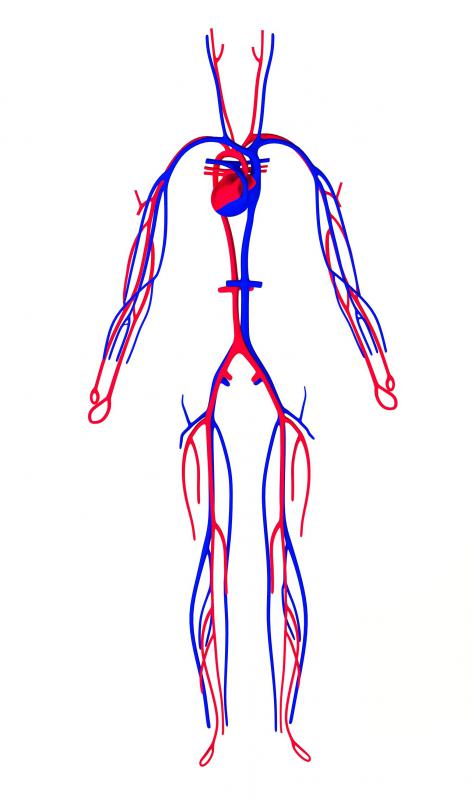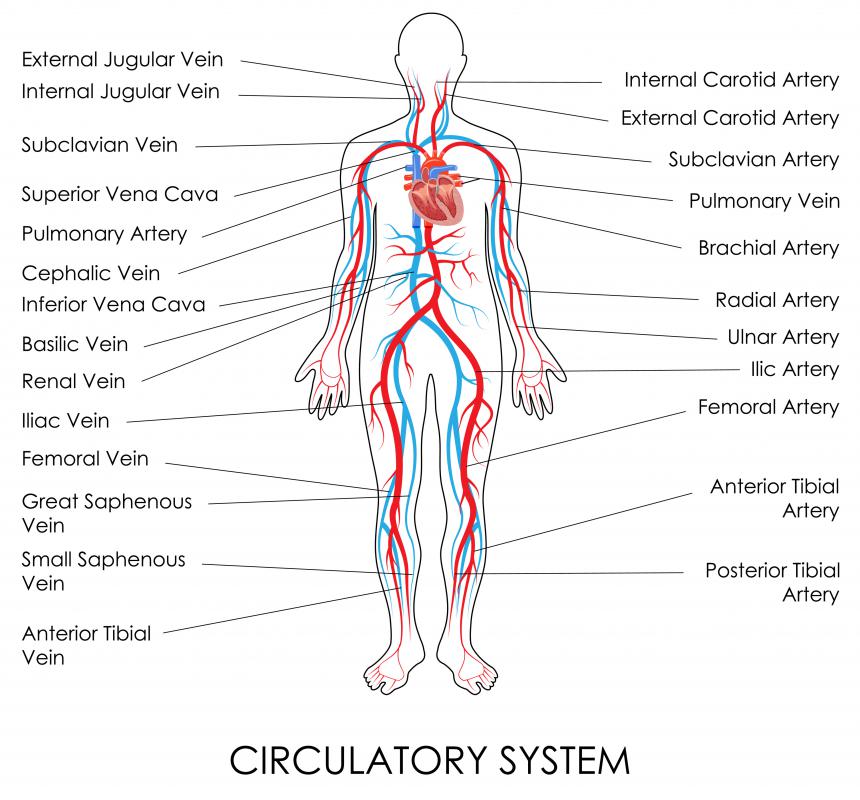At TheHealthBoard, we're committed to delivering accurate, trustworthy information. Our expert-authored content is rigorously fact-checked and sourced from credible authorities. Discover how we uphold the highest standards in providing you with reliable knowledge.
What is an Arteriole?
An arteriole is a small blood vessel that forms a connection between small arteries and capillaries. Arterioles are an important part of the circulatory system. These vessels are filled with oxygenated blood from the heart that has a bright red appearance, in contrast with the blue tinge of blood being carried toward the heart and lungs so that it can be reoxygenated.
These blood vessels are between 10 and 100 micrometers wide, about the width of a human hair or smaller. They have thin muscular walls that can be contracted to restrict the flow of blood through a give arteriole or relaxed to increase the flow of blood. These vessels are supplied by small arteries, and small arteries in turn get their blood supply from the large arteries of the body. From the arteriole, blood passes into the capillaries. Pores in the walls of the capillaries allow for the exchange of nutrients and wastes that are carried away in the venules connected at the other side.

Arterioles play an important role in determining how much blood is distributed to organs and tissues. The body produces vasodilators and vasoconstrictors, compounds that dilate and contract blood vessels, to regulate the movement of blood through the circulatory system. Blood supply can be increased in situations like injuries where there is a need for ample blood, or restricted if the body wants to divert resources elsewhere. This also has an impact on blood pressure. When the blood vessels are relaxed, blood pressure is low because there is less resistance.

The circulatory system is a highly efficient and well-oiled machine. In addition to supplying nutrients and carrying away wastes, the blood is also involved in immune system functions and injury response. On very short notice, signals can be sent to redirect supplies of blood, increase a blood supply to a given area, or circumvent a blockage to deliver blood to an area of tissue that is at risk of ischemia, or lack of oxygen.

One problem that can develop within an arteriole is clotting, which leads to increased blood pressure in addition to restricting the supply of blood to an area fed by an obstructed vessel. Diseases involving the circulatory system can limit circulation or damage individual vessels, leading to tissue death and other problems. The microcirculation involving the arterioles, capillaries, and venules is critically important to the health of every part of the body from the skin to the spleen.
AS FEATURED ON:
AS FEATURED ON:

















Discussion Comments
@runner 101 - I know this is silly. But the acronym I came up with is AACV for arteries to arterioles to capillaries to venules.
The saying I use with that acronym to help me remember the actual acronym since it doesn't spell out an easy to remember or familiar word is: Ask About Calling Venus.
The reason I use this is because I like to talk on the phone and the word Venus helps me to remember it is venule and not vein, which I get mixed up.
@Sinbad - I am having to learn about this part of the body too! Have you figured out a good acronym with a saying to help you with the order of the vessels?
@Sinbad - Right, just don't forget its other main function: arterioles help determine how much blood go to the end places in the body based on how constricted or relaxed these vessels are. This is part of what sets arterioles apart from the rest of the chain of vessels that deliver blood.
There are also afferent arterioles and efferent arterioles. These arterioles supply two different parts of the body, and it is because the arterioles help determine how much blood goes into the parts of the body that they play such important roles versus just delivering blood.
So if I had to determine the function of arterioles, its main function would be that it is one of the vessels that forms the path of blood transportation. Therefore, blood transportation is its function?
Post your comments